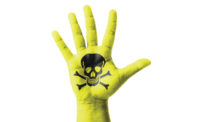Passed Congress this spring and awaiting President Obama’s signature, the Chemical Safety for the 21st Century Act1 modernizes the 40-year-old Toxic Substances Control Act (TSCA) that was the cornerstone of chemical management in the United States. What should you expect from the new law?
Looking back
TSCA was toothless for most of its time – incapable to ban even asbestos. Attempts to reform TSCA have been ongoing for years.
EU established REACH to manage chemicals a decade ago. REACH forces toxicological evaluation of existing and new chemicals upon chemical manufacturers. China established a REACH-like law in 2010. South Korea followed in 2013. Australia, Malaysia, Japan, Russia, Taiwan, Turkey and other countries established or substantially updated chemical management laws within the past decade. Nearly every U.S. state established law in the past ten years to manage some aspect of chemicals, such as restrictions, biomonitoring, and environmentally preferable purchasing.
Drivers for law
• Consumers of chemicals are becoming more aware of hazards. But harm is not spread uniformly. Chemical exposure to populations such as “infants, children, pregnant women, workers, or the elderly” may be at greater risk of harm than the general population. This concept is firmly addressed (though not REACH-like) in the U.S.’s Chemical Safety for the 21st Century Act.
• Future use of new and existing chemicals is uncertain. For example, four new lab-synthesized radioactive chemical elements (113, 115, 117 and 118) will be formally added this year to the periodic table. Elements can be combined to create an endless number of chemical compounds. Chemical compounds may also be nano-sized to behave much differently than their larger-sized self.
Consider the radioactive element americium (element 95) discovered as a decay byproduct from plutonium needed to create the first nuclear weapon. Americium dioxide is found now in nearly every U.S. home – the chemical compound makes ionization smoke detectors work.
An ionization smoke detector emits around 37,000 alpha particles per second. These particles cannot penetrate skin but are a significant health hazard if ingested or inhaled. Don’t dismantle or burn a smoke detector. If americium dioxide gets into the body it will create a permanent effect upon the testicles and ovaries. In 1994, a 17-year-old kid extracted americium dioxide from 100 smoke detectors in an attempt to build a breeder nuclear reactor.2 Without the ionizing smoke detector, though, twice as many lives would be lost in home fires, according to the NFPA’s 2015 research report “Smoke Alarms in U.S. Home Fires.”3
Generation gap
Younger EHS pros may have a better mentality and global outlook of how chemicals must be managed. Older pros are often clueless to new chemical management tools for workers such as GESTIS database on their smartphone and how and when to apply DNELs. Older EHS pros often cling to OSHA PELs. The only meaningful demographic to many veteran pros is “workers” and “public” (OSHA vs. EPA). Managing chemical exposure for pregnant workers and other sub-populations often throws old OSH pros into a tizzy.
New rules
The Chemical Safety for the 21st Century Act will spawn new rules and regulations. Each will be subject to other federal laws that manage chemicals such as FIFRA, CPSC and FDA. Chemical management laws at the U.S. state level may see an upturn before the new federal law preempts new state law. To keep ahead of the game, employer conformance with “intent-of-new-rules” should proceed compliance with “letter-of-the-law” as best practices.
Improved skills
Scientific and toxicological profiles on chemicals will accelerate. Globalization of chemical safety language (GHS) will further engage the public e.g. workers. The movement from right-to-know to right-to-understand and beyond will challenge you to enhance risk and business communication skills. This goes far beyond old OSHA hazcom practices.
For example, if an employer has a program to manage worker exposure to CMRs (carcinogens, mutagens and chemicals toxic to reproduction), it is a risk communication failure if DNELs “the level of exposure above which humans should not be exposed” are not part of the program. There are more than 1,000 DNELs and growth continues. Outdated (sometimes decades old) PELs are stalled at about 600. Should an employer conform to carbon monoxide’s DNEL for workers at 20 ppm or only comply with federal OSHA PEL at 50 ppm? Two workers standing side-by-side may need to be treated differently.
Know your chemicals
Employers should be alert to which chemicals may become a high priority for EPA risk evaluation under the Chemical Safety for the 21st Century Act. CMRs and chemicals that are persistent and bioaccumulate should be kept under close review, particularly if they are components in important manufactured products or have a critical use in the supply chain.
Be alert to which organizations desire better chemical management – and which chemicals they may have on their hit-list. Don’t overlook seemingly obscure groups to chemical management concerns such as the American Academy of Pediatrics4 or retail outlets such as Walmart.
Due to their unique qualifications to apply chemical science, toxicology and health exposure data, employers should include Certified Industrial Hygienists in chemical management discussions. Other credentials such as DABT, CHMM, CSP or even RN may be beneficial to help manage chemicals.
Conclusion
The Chemical Safety for the 21st Century Act will not have an immediate effect. Its application, interpretation, and impact on other laws, though, should be profound going forward. Nearly everyone believes modern law for chemical management was urgently needed – particularly when other countries were setting the tone on chemical management. Forty-year old TSCA is the last major EPA law to be updated. Now’s the time to update your management of chemicals.
References
1. https://www.congress.gov/114/bills/hr2576/BILLS-114hr2576eah.pdf
3. https://en.wikipedia.org/wiki/Americium
4. http://pediatrics.aappublications.org/content/pediatrics/127/5/983.full.pdf


